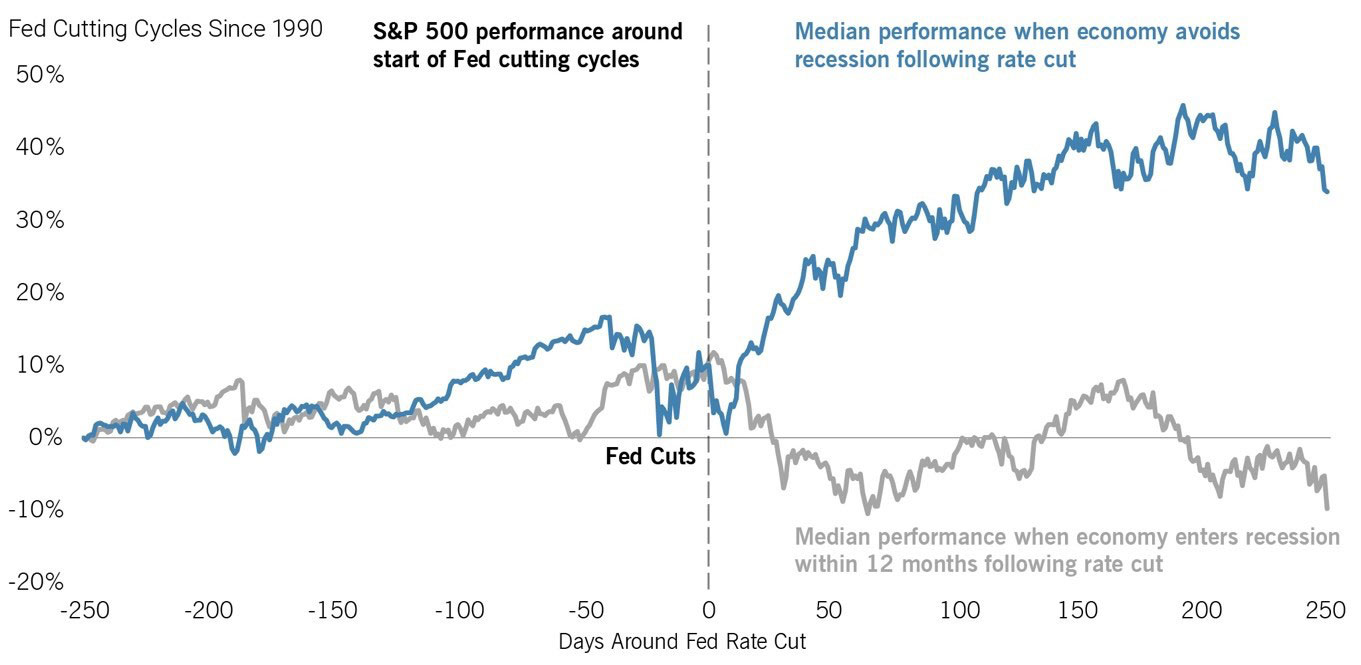Amid the current economic landscape, future expectations regarding inflation have dipped to their lowest levels in years, offering the Federal Reserve reason to celebrate as they tame one of their key mandates. However, despite this positive trend, the Central Bank remains cautious, signaling that it’s still premature to delve into discussions around potential rate cuts. Nevertheless, market speculation leans toward potential rate cuts by March 2024, setting the stage for a debated future in Fed policies.
When delving into historical Fed rate cut cycles, we find diverse insights. Concluding rate hikes in the past have often translated into a notable surge in S&P 500 returns over the subsequent 12 months, hinting at positive market responses.
However, history’s reflection on initial rate cuts showcases varied outcomes, especially when intertwined with the onset of an economic downturn within 12 months of the Federal Reserve’s interest rate adjustment. Should the economy lack resilience during a potential recession, the market’s journey post-Fed rate cuts appear notably sensitive.
In past instances, when the economy entered a recession within this period, the market experienced more substantial declines following the Fed’s rate cut.
Understanding these intricacies is pivotal and highlights that attempting to predict market reactions to Fed rate hike cycles is a futile exercise. No one can be certain what the future holds. Instead, our methodology here at Redwood revolves around disciplined strategies grounded in risk management and preparation for varying types of market environments, as we seek to align portfolio strategy with your unique financial aspirations.
Post-Cut Conundrum

- We believe the preservation of capital is key to consistent, long-term investment success.
- Our investment approach is grounded in economic theory and backed by quantitative analysis.
- Managing drawdown risk is a pillar from which we build our portfolios.
Watch our Intro Video! Learn a better way to invest:

